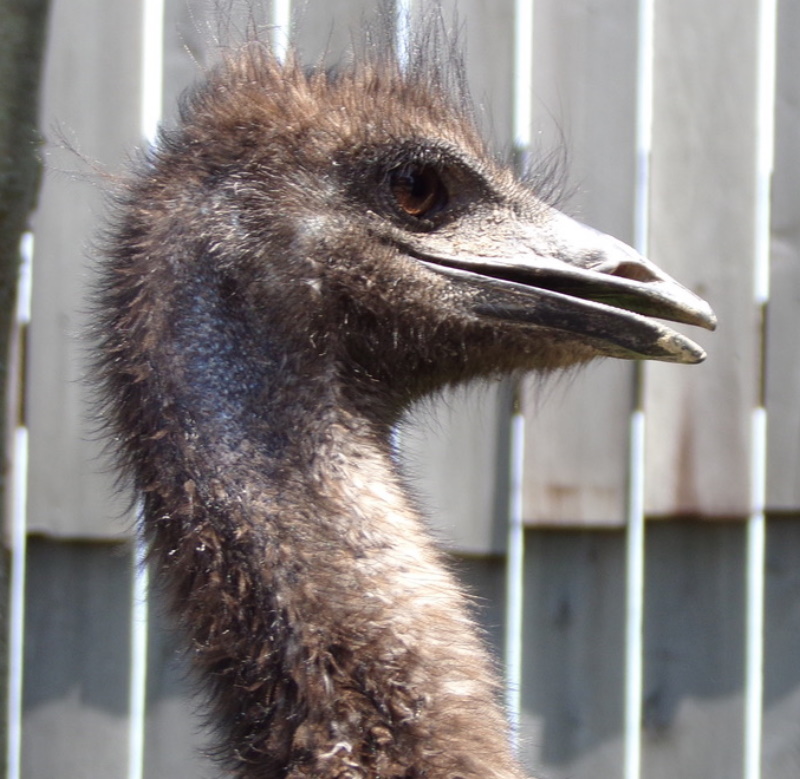
Emu
Over 600 places in Australia are named after emus, and they’re even featured on the country’s coat of arms alongside kangaroos!
Day of Creation: five
Biblical Kind: emu (only includes emus)
Status: least concern
Height: 5 (males)–6 (females) feet (1.5–1.8 meters)
Weight: 65 (males)–120 (females) pounds (29.5–54.4 kilograms)
Habitat: mainland Australia
Lifespan: 20–40 years
Diet: roots, seeds, grasses, fruits, insects, small vertebrates
Family Life: typically solitary, but will pair up in breeding season and occasionally form flocks when migrating
Reproduction: 5–15 eggs hatch after 8-week incubations
Fun Facts
The origin of the word “emu” is uncertain, but it may be derived from the Portuguese word ema, a term for a large bird.
Emus are very vocal and have throat pouches that emit a variety of booms, drums, grunts, and hisses that can be heard over a mile (1.6 kilometers) away.
Emu feathers are unique because two feathers grow from each follicle. Their feathers are not waterproof and do not hook together, giving them a shaggy appearance.
Their eggs are blue-green in color, weigh over a pound, and are equivalent to 12 chicken eggs in volume. Once females lay their eggs, they may stick around to defend the nest for a while but ultimately depart and leave the males to care for the eggs and chicks alone. Males forgo food and incubate their nests for eight weeks, losing up to a third of their body weight in the process. Fathers then raise the chicks for the next 12–18 months.
As the second-tallest bird in the world, emus cannot fly, but they can run 30 miles per hour (48.3 kilometers per hour), cover 9 feet (2.7 meters) in one stride, and jump 7 feet (2.1 meters) high.
